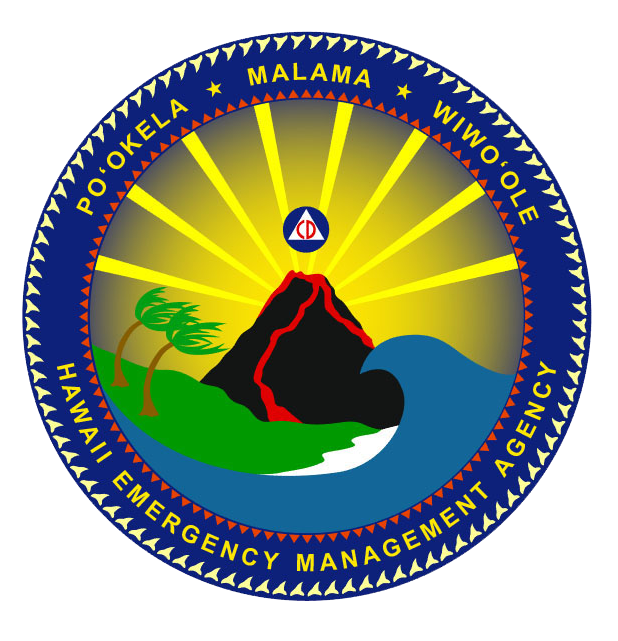Plans
 State of Hawaii Strategic Plan 2020-2025
State of Hawaii Strategic Plan 2020-2025
 2021 Threat and Hazard Identification and Risk Assessment (THIRA)
2021 Threat and Hazard Identification and Risk Assessment (THIRA)
The THIRA is a three-step risk assessment completed every three years. It helps answer the following questions:
- What threats and hazards can affect our community?
- If they occurred, what impacts would those threats and hazards have on our community?
- Based on those impacts, what capabilities should our community have?
The THIRA helps communities understand their risks and determine the level of capability they need in order to address those risks. The outputs from this process lay the foundation for determining a community’s capability gaps during the SPR process.
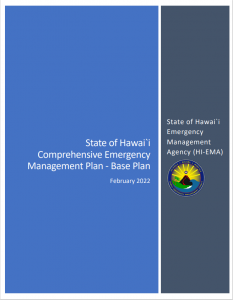
State of Hawaii Comprehensive Emergency Management Plan – Base Plan
The State of Hawai`i Comprehensive Emergency Management Plan – Base Plan describes and establishes the
organizational framework the state will use to document and socialize the many strategic, operational, and
tactical emergency management plans, policies, and procedures that make up the State Comprehensive
Emergency Management Program.
The implementation of this plan requires collaboration and commitment from all state entities with emergency
management responsibilities. Through the execution of this document, state emergency management activities
will increase in effectivity, to the benefit of all public and private entities as well as state residents and visitors.
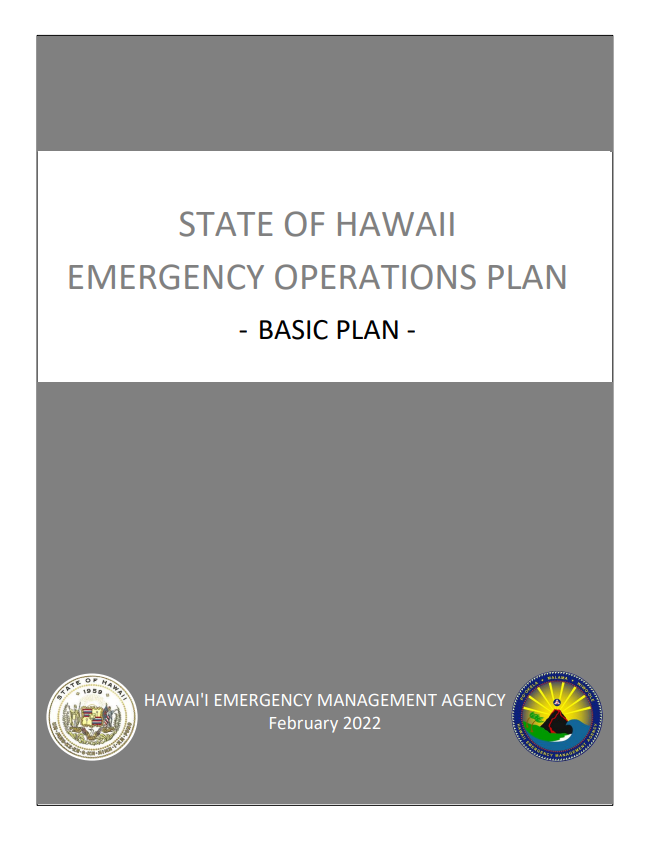 State of Hawaii Emergency Operations Plan (HI-EOP) and Annexes
State of Hawaii Emergency Operations Plan (HI-EOP) and Annexes
The Hawaii Emergency Operations Plan (HI-EOP) is an all-hazards plan that establishes the shared framework for the state’s response to, and initial recovery from emergencies and disasters. The Base Plan is supported by Annexes that outline responsibilities of state agencies and partners for emergency functions and provide additional detail on the response to specific types of issues and incidents.
STATE EMERGENCY SUPPORT FUNCTION (SESF) ANNEXES |
INCIDENT ANNEXES |
SUPPORT ANNEXES |
| SESF #1 – Transportation |
Hawaii Catastrophic Hurricane Plan Cyber Disruption Response Plan Terrorism and Targeted Violence Annex
|
|
| SESF #2 – Communications
|
||
| SESF #3 – Public Works and Engineering | ||
| SESF #4 – Firefighting | ||
| SESF #5 –Information & Planning | ||
| SESF #6 – Mass Care, Emergency Assistance, Housing & Human Services
*Memorandum of Understanding Between HI-EMA and the Hawaii Association of Animal Welfare Agencies *Memorandum of Understanding between HI-EMA and the Hawai’i Veterinary Medical Association |
||
| SESF #7 – Logistics Management & Resource Support | ||
| SESF #8 – Public Health & Emergency Services | ||
| SESF #9 – Search & Rescue (Under Development) | ||
| SESF #10 – Oil & HAZMAT Response | ||
| SESF #11 – Agriculture & Natural Resources | ||
| SESF #12 – Energy | ||
| SESF #13 – Public Safety & Security | ||
| SESF #15 – External Affairs | ||
| SESF #16 – Finance & Administration | ||
| SESF #20 – Military Support |
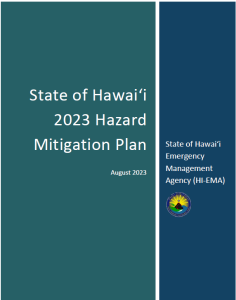 State Hazard Mitigation Plan (SHMP)
State Hazard Mitigation Plan (SHMP)
The SHMP identifies the major natural hazards that affect our state, assesses the risk that each hazard poses, analyzes the vulnerability of our people, property and infrastructure to the specific hazard, and recommends actions that can be taken to reduce the risk and vulnerability to the hazard.
The plan also contains a description of programs, policy, statutes and regulations applicable to hazard mitigation.
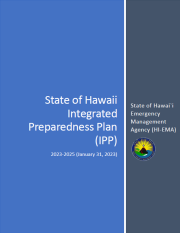 Integrated Preparedness Plan (IPP)
Integrated Preparedness Plan (IPP)
The IPP is updated annually. It is the product of the Integrated Preparedness Planning Workshop (IPPW), which is hosted by HI-EMA and attended by stakeholders from all levels of government, the non-profit and private sectors. The IPP is informed by the input provided by this diverse group of agencies and is the roadmap for Hawaii to accomplish the priorities described within this document.
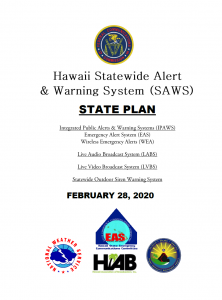 Hawaii Statewide Alert & Warning System (SAWS)
Hawaii Statewide Alert & Warning System (SAWS)
The State Plan for the Integrated Public Alerts & Warning Systems (IPAWS), Emergency Alert System (EAS), and Wireless Emergency Alerts (WEA).
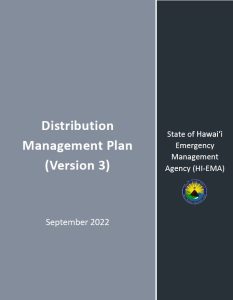 State of Hawaii Distribution Management Plan (DMP)
State of Hawaii Distribution Management Plan (DMP)
The state’s distribution management plan (DMP) details the process for an effective and efficient distribution of critical resources to disaster survivors during a crisis. The plan addresses the numerous activities normally a part of “physical distribution” systems including materials handling, warehousing, supply chain and logistics of critical equipment, commodities and services that meet incident requirements.
